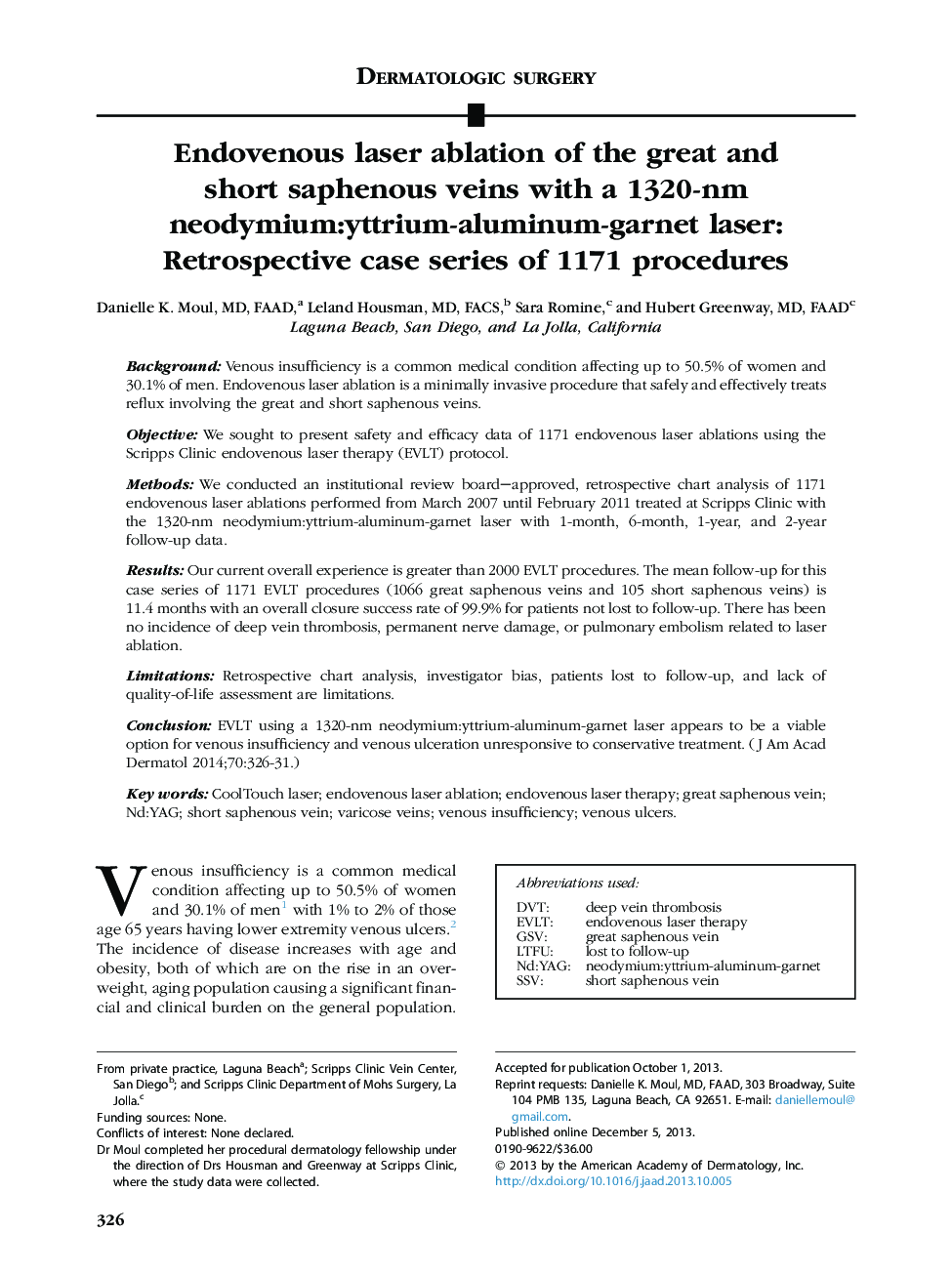| Article ID | Journal | Published Year | Pages | File Type |
|---|---|---|---|---|
| 6073341 | Journal of the American Academy of Dermatology | 2014 | 6 Pages |
BackgroundVenous insufficiency is a common medical condition affecting up to 50.5% of women and 30.1% of men. Endovenous laser ablation is a minimally invasive procedure that safely and effectively treats reflux involving the great and short saphenous veins.ObjectiveWe sought to present safety and efficacy data of 1171 endovenous laser ablations using the Scripps Clinic endovenous laser therapy (EVLT) protocol.MethodsWe conducted an institutional review board-approved, retrospective chart analysis of 1171 endovenous laser ablations performed from March 2007 until February 2011 treated at Scripps Clinic with the 1320-nm neodymium:yttrium-aluminum-garnet laser with 1-month, 6-month, 1-year, and 2-year follow-up data.ResultsOur current overall experience is greater than 2000 EVLT procedures. The mean follow-up for this case series of 1171 EVLT procedures (1066 great saphenous veins and 105 short saphenous veins) is 11.4Â months with an overall closure success rate of 99.9% for patients not lost to follow-up. There has been no incidence of deep vein thrombosis, permanent nerve damage, or pulmonary embolism related to laser ablation.LimitationsRetrospective chart analysis, investigator bias, patients lost to follow-up, and lack of quality-of-life assessment are limitations.ConclusionEVLT using a 1320-nm neodymium:yttrium-aluminum-garnet laser appears to be a viable option for venous insufficiency and venous ulceration unresponsive to conservative treatment.
